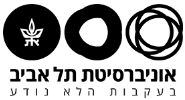Removal of acid dyes from concentrated synthetic and real dye effluent using biochar as sustainable adsorbent: Elizaveta Sterenzon
~~
SCHOOL OF MECHANICAL ENGINEERING SEMINAR
Monday, April 27, 2020 at 14:00
Wolfson Building of Mechanical Engineering, Room 206
Removal of acid dyes from concentrated synthetic and real dye effluent using biochar as sustainable adsorbent
Elizaveta Sterenzon
M.Sc. student of Prof. Hadas Mamane
Wastewater from the textile dyeing industry is a growing problem. It is often rich in color and dye residues, toxic compounds, chemicals, high BOD concentration and much harder degradation materials. The extended use of synthetic dyes, rather than the natural ones, makes the treatment of these textile effluents, much more difficult due to their high stability and low biodegradability. Different textile wastewater treatment technologies already exist in the market. However, in many cases, especially with household dyeing units, the textile wastewater is not treated and discharged directly into nearby water sources. There is a growing demand for low-cost, effective and sustainable alternatives for treatment methods, and adsorption occupies a prominent place as a method for dye removal. This study focused on the removal of acid dyes from synthetic and real dye effluent. For the synthetic effluent, Acid Violet 17 solution was prepared, and the real acid dye effluent was taken from dyer houses from Sirumugai, South India. Pine tree biochar was chosen as a low-cost, sustainable and innovative material for the adsorption. Due to its high porosity and large surface area, biochar is gaining a lot of interest in the field of water treatment, as a low-cost contamination adsorbent. Various parameters were tested to investigate the dye removal ability and the best adsorption conditions, as temperature, solution pH and biochar dosage. Kinetic and thermodynamic studies also have been conducted. The results showed an increased dye adsorption at lower pH and at higher temperatures, which indicates an endothermic reaction. According to the kinetic studies, the governing model for the adsorption is the pseudo second order and the Langmuir isotherm fitted significantly better than Freundlich. Regeneration of the biochar was found to be very effective with absolute ethanol. After 5 regeneration cycles the adsorption ability reduced by only 3% from the initial dye removal, and it was almost no biochar mass loss observed. The real textile effluent demonstrated high adsorption affinity to the biochar as well, with almost 100% dye removal after 60 min of treatment.


